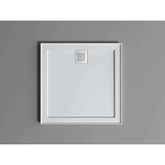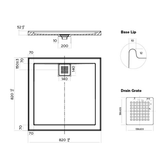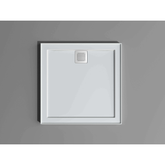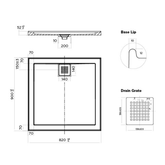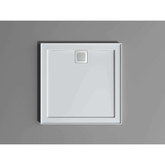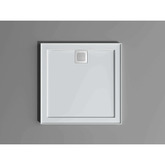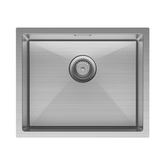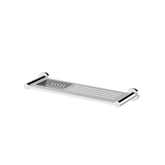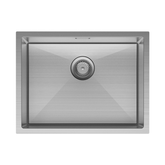What is a "Bottom Inlet" vs "Back Inlet"?
When choosing a toilet, one of the technical aspects you'll encounter is the type of water inlet: "bottom inlet" and "back inlet." These terms refer to the location where the water supply enters the cistern, and understanding the difference can help you make an informed decision that suits your bathroom's plumbing setup and aesthetic preferences. Let's dive into what each type of inlet offers and how they compare.
Understanding the "Bottom Inlet"
A "bottom inlet" toilet refers to a system where the water supply enters the cistern from the bottom. The inlet valve is typically located on the underside of the cistern, and the water connection is usually concealed behind the toilet, with only a small portion of the pipe visible.
Key Features of a Bottom Inlet:
-
Discrete Appearance: Since the inlet is located at the bottom of the cistern, the plumbing connection is less visible, offering a cleaner, more streamlined look.
-
Ease of Installation: Bottom inlets are often easier to install in existing plumbing setups, as the connection is straightforward and commonly found in many homes.
-
Accessibility for Maintenance: Because the inlet is located at the bottom, it can be easier to access for maintenance or repairs compared to other configurations.
-
Noise Level: One downside of the bottom inlet is that it may produce more noise during the refilling process since the water enters from the bottom and can create a more noticeable sound.
Understanding the "Back Inlet"
A "back inlet" toilet, on the other hand, has the water supply entering the cistern from the back, typically at the top. The inlet valve is hidden behind the cistern, making the connection completely concealed from view.
Key Features of a Back Inlet:
-
Fully Concealed Plumbing: The most significant advantage of a back inlet is that all plumbing connections are hidden, providing a very clean and minimalist look. This is particularly appealing for modern bathroom designs where aesthetics are a priority.
-
Quieter Operation: Because the water enters the cistern from the top, back inlets are generally quieter during the refill process. The water doesn't have as far to travel within the cistern, reducing noise levels.
-
Complex Installation: Installing a back inlet can be more challenging, especially if your existing plumbing isn't designed for it. It often requires additional work to conceal the plumbing behind the wall or within cabinetry.
-
Less Visible Maintenance: While the concealed nature of the back inlet is aesthetically pleasing, it can make maintenance and repairs more difficult, as accessing the inlet valve might require removing parts of the wall or cabinetry.
Comparing Bottom Inlet and Back Inlet
When deciding between a bottom inlet and a back inlet, the choice often comes down to a balance between aesthetics, noise level, and ease of installation.
-
Aesthetics: If you prefer a completely seamless look with no visible plumbing, a back inlet is the way to go. It creates a sleek, uncluttered appearance that fits well with modern, minimalist designs. The bottom inlet, while still discrete, may leave a small portion of the plumbing visible.
-
Noise: Back inlets are generally quieter, which might be an essential factor if your bathroom is near living areas or bedrooms. Bottom inlets, while slightly noisier, are often not loud enough to be disruptive.
-
Installation and Maintenance: If you're looking for an easier and potentially less expensive installation, a bottom inlet might be more suitable. It’s also easier to access for repairs. However, if you're doing a complete bathroom renovation or building a new home, and you want the most refined look possible, a back inlet might be worth the extra effort.
Conclusion
Choosing between a bottom inlet and a back inlet comes down to your priorities in terms of design, noise, and installation. Both options have their benefits, and understanding these can help you select the best fit for your bathroom. Whether you opt for the more straightforward and accessible bottom inlet or the sleek and quiet back inlet, either choice can contribute to creating the bathroom of your dreams.
